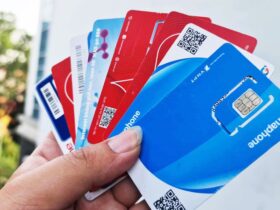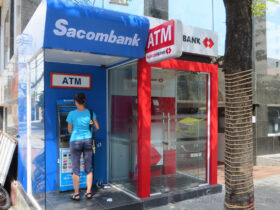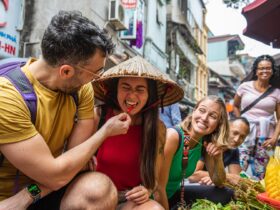The moment I stepped off the plane in Hanoi, the vibrant energy of Vietnam hit me like a wave. But before diving into the street food scene or exploring ancient temples, I had to tackle something far more practical: understanding the local currency. After three visits to this beautiful country, I’ve made every money mistake imaginable so you don’t have to. This guide will help you navigate the Vietnamese đồng with confidence, from recognizing banknotes to finding the best exchange rates.
Understanding the Vietnamese Đồng (VND)
Vietnam’s official currency is the Vietnamese đồng (pronounced “dong”), symbolized as “₫” or abbreviated as VND. When I first arrived, I remember feeling overwhelmed looking at price tags with multiple zeros—a common reaction for many Americans. A simple mental trick? Remove three zeros from any price to get a rough USD equivalent, then divide by 23 (or 25 as of 2025).
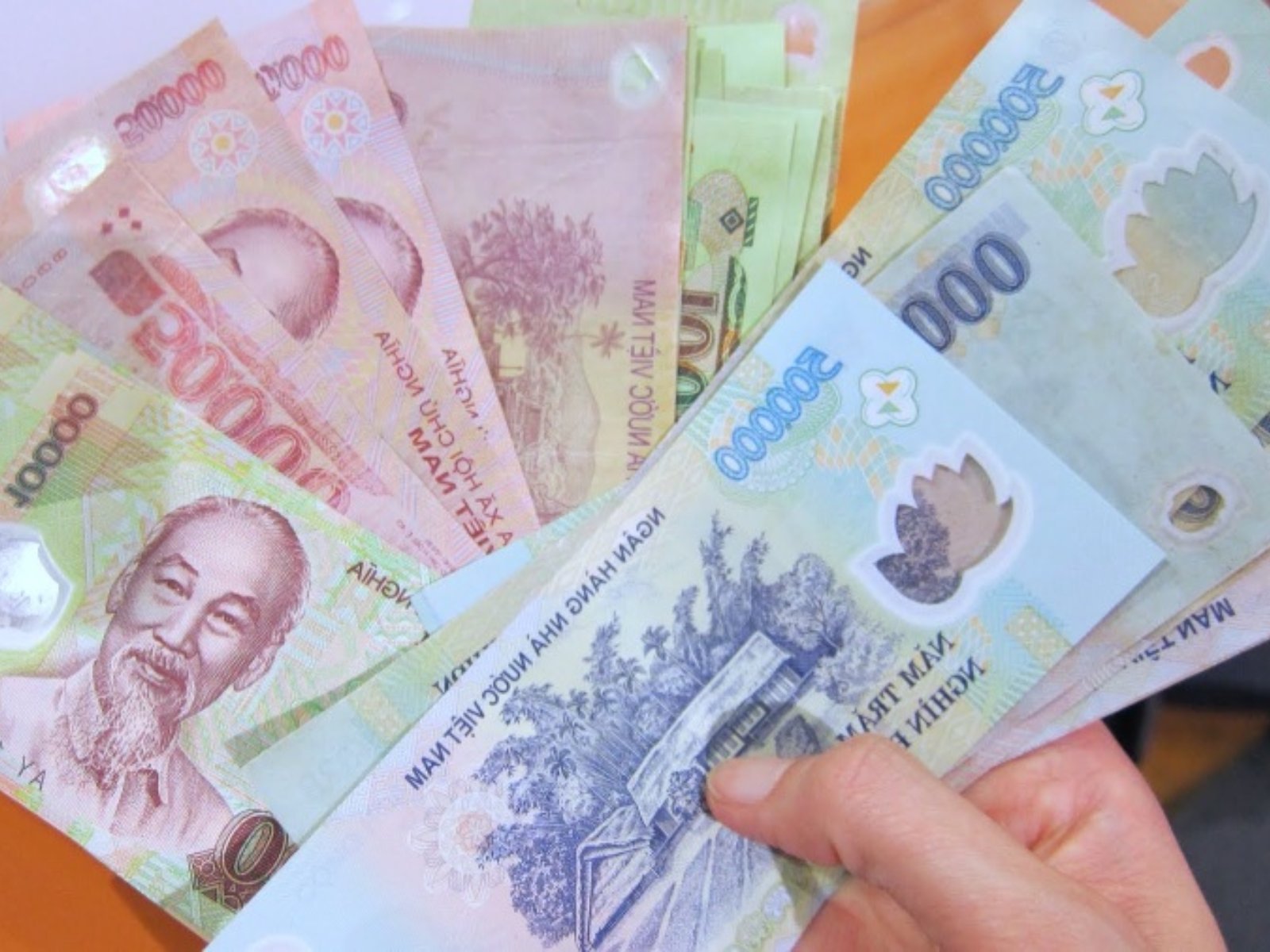
Banknotes You’ll Actually Use
Vietnamese banknotes come in two main types:
Polymer notes (what you’ll primarily use):
- 10,000 VND (gray/blue) – about $0.40
- 20,000 VND (blue) – about $0.80
- 50,000 VND (pink/red) – about $2
- 100,000 VND (green) – about $4
- 200,000 VND (reddish-brown) – about $8
- 500,000 VND (blue/purple) – about $20
Paper notes (less common but good to recognize):
- 1,000 VND, 2,000 VND, and 5,000 VND – these have minimal value and are rarely used for tourist transactions
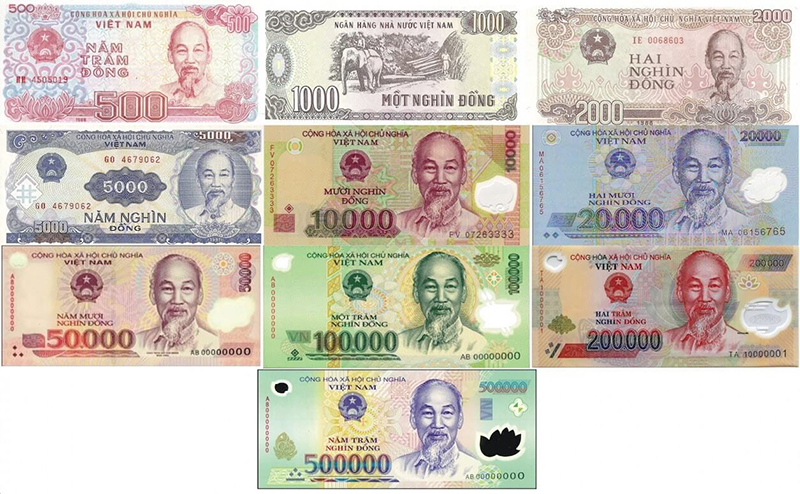
Pro tip: Be extremely careful with the 20,000 VND and 500,000 VND bills. I once absentmindedly paid for a 60,000 VND meal with a 500,000 VND note instead of a 100,000 VND note. Though the honest server corrected my mistake, not everyone will. These two bills share similar blue coloring but have a 25× difference in value!
Getting Your Hands on Vietnamese Currency
Before You Leave the US
When I visited Vietnam for the first time, I made the rookie mistake of trying to exchange dollars at my local bank in Chicago. The rates were terrible, and they didn’t even have VND available without a special order.
Instead, I recommend:
- Bringing $200-300 in clean, crisp USD bills (newer series, no tears or marks)
- Notifying your bank and credit card companies about your travel dates
- Finding out if your bank refunds international ATM fees (Charles Schwab does)
Upon Arrival in Vietnam
You have several options for exchanging money:
Airports: Convenient but offer slightly worse rates. I’ve found them useful for getting just enough cash (around 1-2 million VND) to cover transportation to my hotel and first meals.
Banks: During my trip to Ho Chi Minh City in 2023, I found Vietcombank offered consistently good rates with proper documentation (passport required). Most banks close by 4:00 PM on weekdays and may not open on weekends.
Jewelry Shops: These unofficial exchangers behind Ben Thanh Market in HCMC or in Hanoi’s Old Quarter often offer the best rates I’ve found. While technically not licensed, they’re widely used by travelers. I exchanged $100 at a gold shop near Dong Xuan Market in Hanoi and got nearly 3% better rates than at the airport.
ATMs: My preferred method for getting most of my spending money. Look for Agribank, BIDV, or Vietcombank ATMs for higher withdrawal limits (up to 5-10 million VND). Most charge 50,000-60,000 VND per transaction, so withdraw the maximum amount to minimize fees.
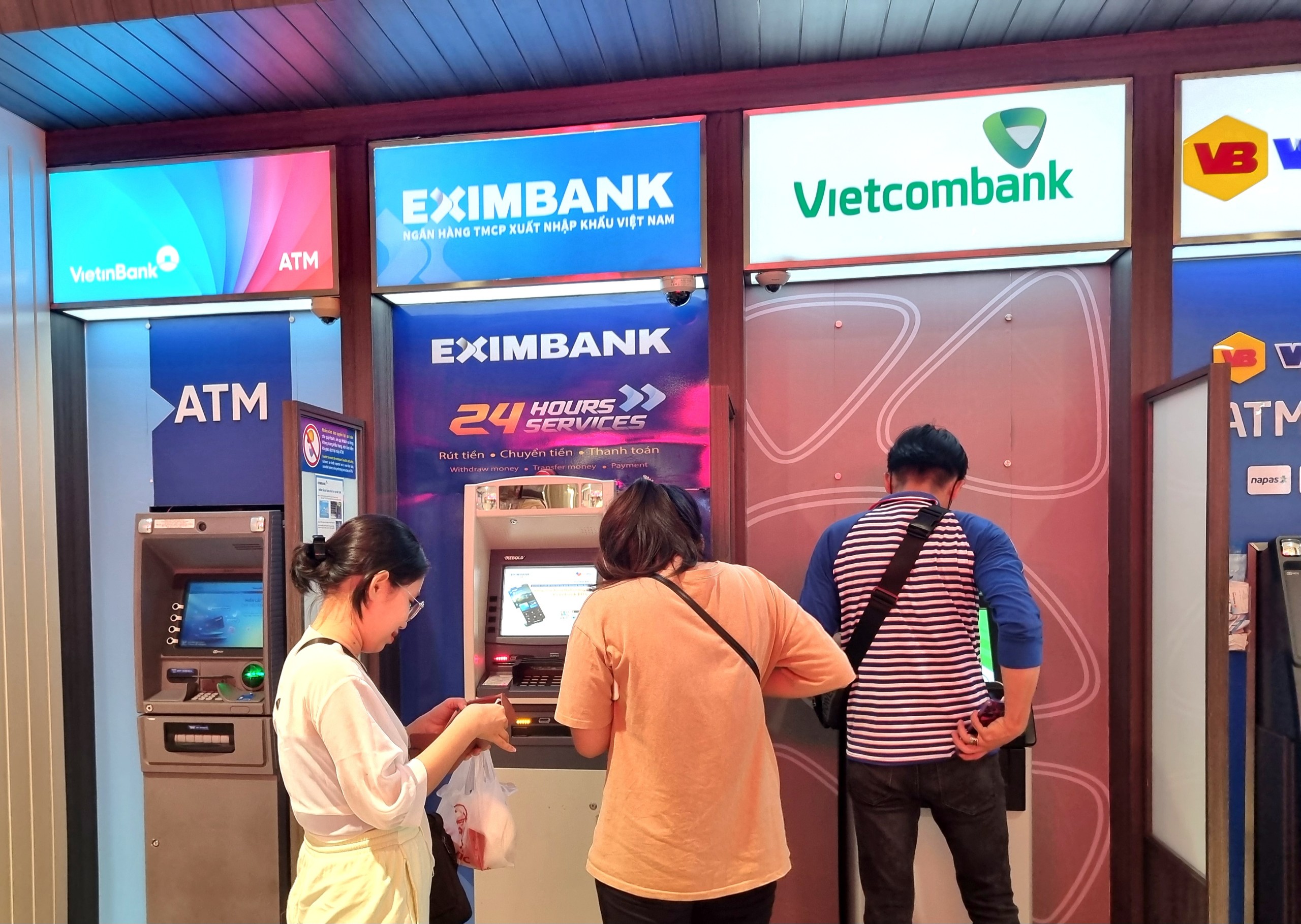
Payment Methods Across Vietnam
Vietnam operates primarily on cash, but the landscape is changing rapidly. Here’s what I’ve experienced:
Where Cash is King
- Street food vendors (the best bún chả in Hanoi cost me just 45,000 VND)
- Local markets (I bargained for silk scarves at Dong Ba Market in Hue using cash)
- Taxis (though major companies now accept cards)
- Rural areas and small towns (when trekking in Sapa, I needed cash for everything)
- Small family businesses
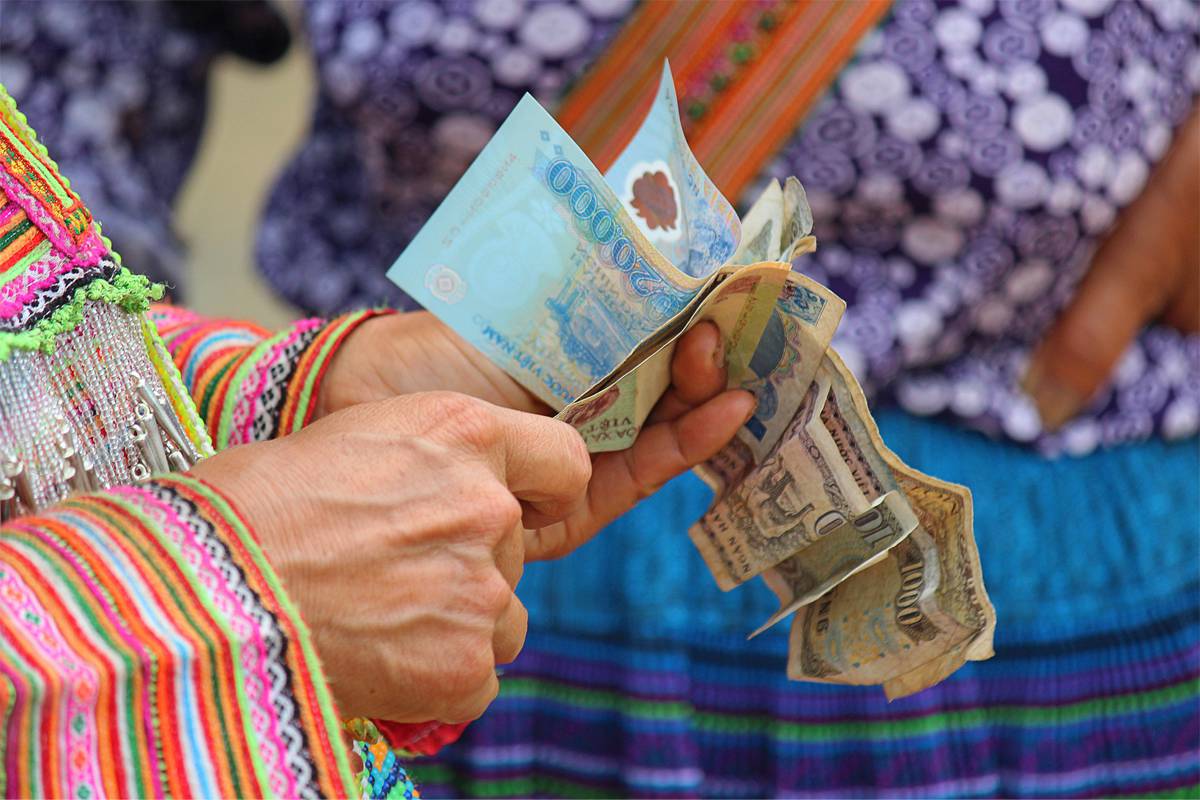
Where Cards Work
- Mid to high-end hotels (my stay at the Melia in Hanoi accepted Visa)
- Shopping malls and department stores
- Tour agencies for booking excursions (my Halong Bay cruise charged a 3% fee for credit card use)
- Chain restaurants and coffee shops (Highlands Coffee, The Coffee House)
- Higher-end restaurants in tourist areas
Contactless and Digital Payments
When I visited in early 2025, I was surprised by how many places in HCMC and Hanoi now accept contactless payments. Major ride-hailing apps like Grab can be linked directly to your credit card, making transportation seamless.
Practical Money Management Tips
Carrying and Organizing Your Cash
The first time I opened my wallet to pay for a bowl of phở, I fumbled through what seemed like monopoly money, holding up the line. Learn from my mistake:
- Sort your bills by denomination (I use different sections of my wallet)
- Keep smaller bills (10,000-50,000 VND) easily accessible for street food and small purchases
- Secure larger bills (100,000+ VND) in a money belt or hidden pouch
- Always have small bills for tipping and markets
Bargaining Basics
Bargaining is expected in markets, with local crafts, and with some taxi drivers. When I shopped at Dong Xuan Market in Hanoi, I started at 50% of the initial asking price and we usually settled around 60-70%. Remember that while 20,000 VND ($0.80) might seem negligible to you, it can be significant to a local vendor.
ATM Strategies
ATMs have saved me multiple times, but they come with challenges:
- Many local bank ATMs limit withdrawals to 2-3 million VND (about $80-120)
- International bank ATMs may allow up to 5-10 million VND but charge higher fees
- Some machines in tourist areas run out of cash, especially during holidays
- Always choose to be charged in local currency (VND) if given a choice
During my trip to Hoi An, I found that Commonwealth Bank ATMs consistently offered the highest withdrawal limits with reasonable fees.
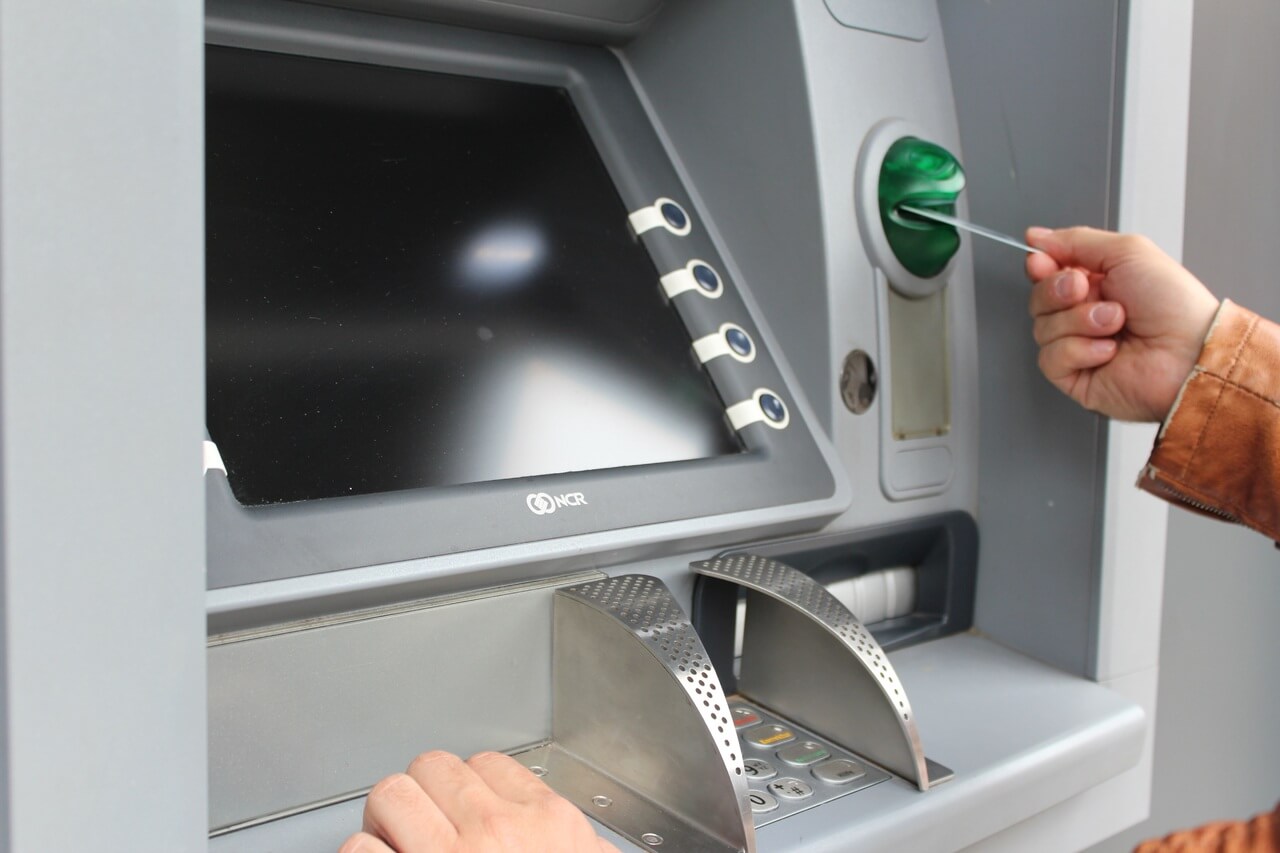
Safety Considerations
Vietnam is generally safe for tourists, but like anywhere, take precautions:
- I use a front pocket wallet in crowded areas like Ben Thanh Market
- Never flash large amounts of cash
- Use hotel safes for extra currency and valuable documents
- Be wary of money changers offering “too good to be true” rates
- Count your change immediately after every transaction
Sample Expenses (Based on My 2025 Visit)
To help you plan your budget, here’s what I typically spent in Vietnam:
Food & Drink:
- Street food meal (phở, bánh mì, bún chả): 30,000-60,000 VND ($1.20-2.40)
- Local coffee at a sidewalk café: 20,000-30,000 VND ($0.80-1.20)
- Mid-range restaurant meal: 150,000-300,000 VND ($6-12)
- Beer (Bia Hoi): 10,000-20,000 VND ($0.40-0.80)
- Bottled water: 10,000 VND ($0.40)
Transportation:
- Motorbike taxi (short trip): 20,000-50,000 VND ($0.80-2)
- Grab car (city ride): 60,000-150,000 VND ($2.40-6)
- Day rental of motorbike: 150,000 VND ($6)
Accommodation:
- Hostel dorm bed: 200,000-300,000 VND ($8-12)
- Budget hotel: 500,000-700,000 VND ($20-28)
- Mid-range hotel: 1,200,000-2,500,000 VND ($48-100)
- Luxury hotel: 3,500,000+ VND ($140+)
Activities:
- Museum entrance: 30,000-100,000 VND ($1.20-4)
- Full-day guided tour: 800,000-1,500,000 VND ($32-60)
- Cooking class: 600,000-1,000,000 VND ($24-40)
Read more:
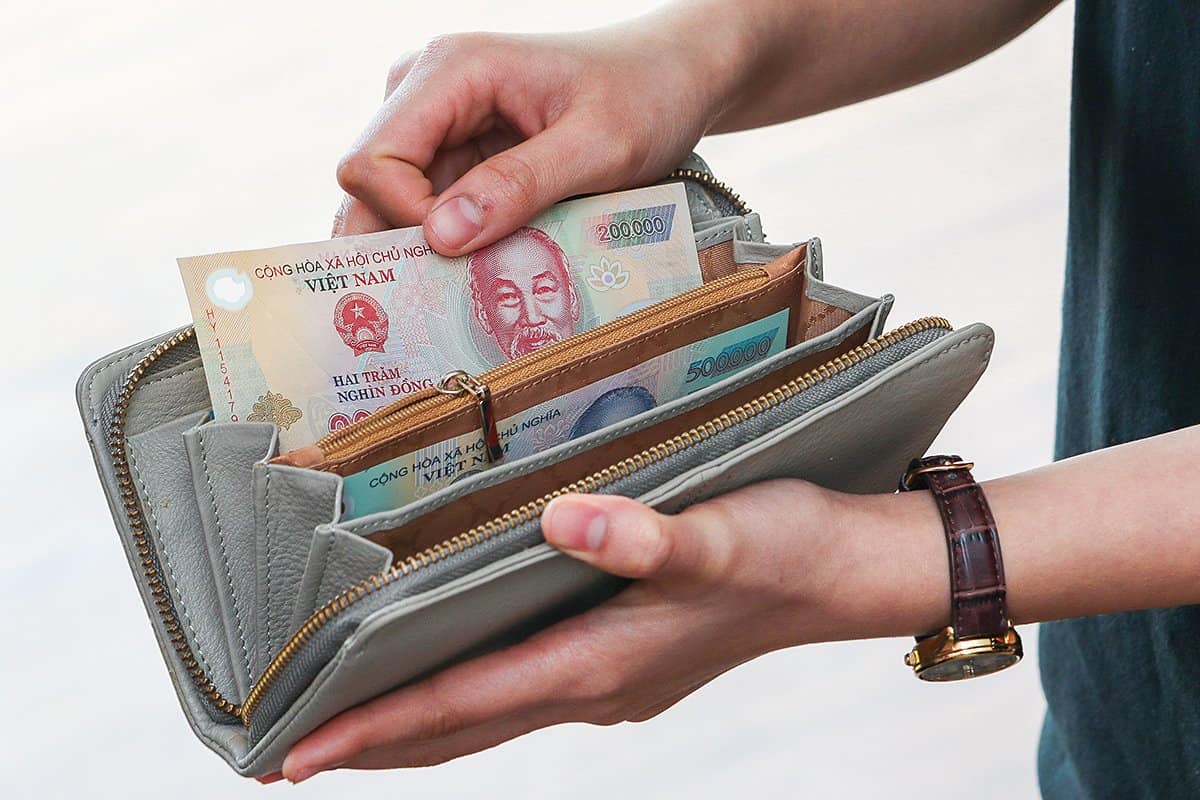
Best Time to Visit and Manage Your Money
During my spring visit to northern Vietnam, I discovered the importance of timing:
- November to April is ideal for exploring Hanoi and northern regions, with milder temperatures making city walking more pleasant
- May to October works better for beach destinations like Da Nang, Nha Trang, and Phu Quoc
- Avoid major holidays like Tet (Vietnamese New Year, usually in January or February) when many businesses close and prices increase
Practical Tips You Won’t Find Elsewhere
- Local bank apps: During my month-long stay, I downloaded Vietcombank’s app for finding nearby ATMs with real-time information on withdrawal limits
- Emergency cash: I always keep a $100 USD bill hidden in my luggage for emergencies
- Torn bills: Vietnamese merchants may refuse damaged banknotes, so handle your VND with care
- Excess VND: If you have leftover đồng, you can exchange it at the airport before departure, but rates are poor. I prefer to spend it on last-minute souvenirs or Vietnamese coffee to bring home
When I got caught in a downpour in Hoi An, I discovered my wallet had gotten wet, damaging some of my larger bills. Several shops refused these damp notes, teaching me to always keep currency in a waterproof container during rainy season.
Vietnam’s currency system might seem intimidating at first with all those zeros, but after just a few days, you’ll be handling đồng like a local. The country’s affordability is one of its greatest attractions—where else can you enjoy a delicious meal for under $3 or stay in a comfortable hotel for $30? Managing your money wisely will help ensure your Vietnamese adventure remains both memorable and budget-friendly.
